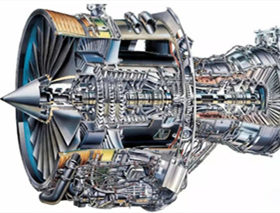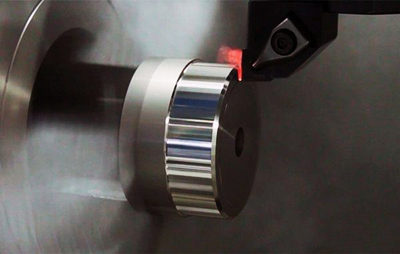

What is a superalloy?
Superalloy refers to a kind of metal materials based on iron, nickel and cobalt, which can work for a long time at high temperature above 600℃ and under certain stress. And has high high temperature strength, good oxidation resistance and corrosion resistance, good fatigue performance, fracture toughness and other comprehensive properties. Superalloy with single austenite structure has good stability and reliability at various temperatures.
Based on the above performance characteristics, and the high degree of alloying superalloy, also known as "super alloy", is widely used in aviation, aerospace, petroleum, chemical, ship, an important material. According to the matrix elements, superalloys are divided into iron base, nickel base, cobalt base and other superalloys. The use temperature of iron base superalloy can only reach 750~780℃ in general, for heat resistant parts used at higher temperatures, the use of nickel base and refractory metal based alloy. Nickel-based superalloys play a very important role in the whole field of superalloys. They are widely used to manufacture the hottest parts of aviation jet engines and various industrial gas turbines. If the 150Mpa-100h durable strength as a standard, and the current nickel alloy can withstand the highest temperature more than 1100℃, and nickel alloy is about 950℃, iron based alloy is less than 850℃, that is, nickel based alloy correspondingly higher than 150℃ to 250℃ or so.
Nnickel alloy is the heart of an engine. At present, in advanced engines, nickel alloy has accounted for half of the total weight, not only turbine blades and combustion chambers, but also turbine disks and even the last several compressor blades began to use nickel alloy. Compared with iron alloy, nickel alloy has the advantages of higher working temperature, stable structure, less harmful phase and large oxidation and corrosion resistance. Compared with cobalt alloy, nickel alloy can work at higher temperature and stress, especially in moving blade.

Why are superalloys difficult to process?
In the cutting process, the difficulty of high temperature alloy is mainly manifested in the following aspects:
(1) High strength at room temperature and high temperature, large cutting force
When cutting general materials, due to the increase in cutting temperature, the strength decreased significantly, so that the cutting easy ten, and the high temperature alloy at a higher temperature, still has a higher strength, so that the cutting force increases. Usually, the cutting force per unit of superalloy is 1 ~ 3 times higher than that of medium carbon steel. Under the same grinding conditions, the grinding force of superalloy is about two times higher than that of 45 steel.
(2) Work hardening tendency, difficult cutting
The hardness of superalloy is generally not high, but when cutting plastic deformation zone character distortion phenomenon is serious, so that has been processed agriculture and cold hardening. When cutting superalloy, the hardness of machined surface is 50% - 99% higher than that of matrix.

(3) Low thermal conductivity, high cutting temperature in the processing process
When cutting superalloy, large plastic deformation is produced, there is strong friction between workpiece and cutting force, so a lot of cutting heat is generated. Because the thermal conductivity of superalloy is very low, so the heat dissipation of superalloy is very poor, most of the cutting heat is concentrated in the cutting area, so that the cutting temperature increases, generally can reach 1 000℃. High temperature will not only aggravate the diffusion wear and oxidation wear, but also cause deformation of the upper parts, resulting in small dimensional accuracy and easy control.
In the grinding process of high temperature alloys, grinding wheel grinding grain at the top of the surface adhesion, high temperature alloy extremely easily with the adhesion on the abrasive surface of the metal layer and the grinding part contact and friction factor increases, coupled with the consumption of grinding at the high temperature alloy deformation work than normal steel material with high grinding, grinding heat is high, and low thermal conductivity of the material itself, thus the grinding heat concentrated in the surface layer was grinder piece, The grinding temperature is high. The grinding temperature of superalloy is about 200℃ higher than that of ordinary steel. The large amount of grinding heat generated when grinding superalloys will cause the surface of parts to burn and crack, and the surface integrity of parts will deteriorate.
Severe wear
Because the high temperature strength of superalloy is high, the work hardening is serious, and the superalloy contains many hard points composed of metal carbide, nitride, boride and intermetallic compounds, especially the micro particles composed of phase, so the mechanical friction and wear is serious. Not only that, because of the cutting force, high cutting temperature, under high temperature and high pressure, a chip interface bonding, resulting in bonding wear. In addition, at a higher cutting temperature, the diffusion of some alloying elements (such as tungsten, cobalt, titanium, niobium, etc.) in the material with the upper part and chip is intensified, resulting in diffusion wear. At the same time, under the condition of high temperature, carbon, hydrogen, oxygen, nitrogen and other elements in the surrounding medium are easy to immerse into the cutting interface, resulting in the formation of the corresponding brittle phase of the material, increasing the stress concentration of the surface tissue of the material, resulting in cracks, and even edge collapse. In the process of grinding superalloy, the abrasive grains of grinding wheel not only have serious wear but also have serious adhesion blockage.
---EDITOR: Doris Hu
---POST: Doris Hu
Semiconductor Industry Solutions
PCD & PCBN Tools Grinding Industry
Diamond Cutting Bruting Polishing
Add: No.171 Zhongyuan Rd, Zhongyuan District, Zhengzhou, 450001, Henan, China
Tel: +86-371-86545906
Phone / Whats App: +86 18339903057
E-mail: [email protected]



